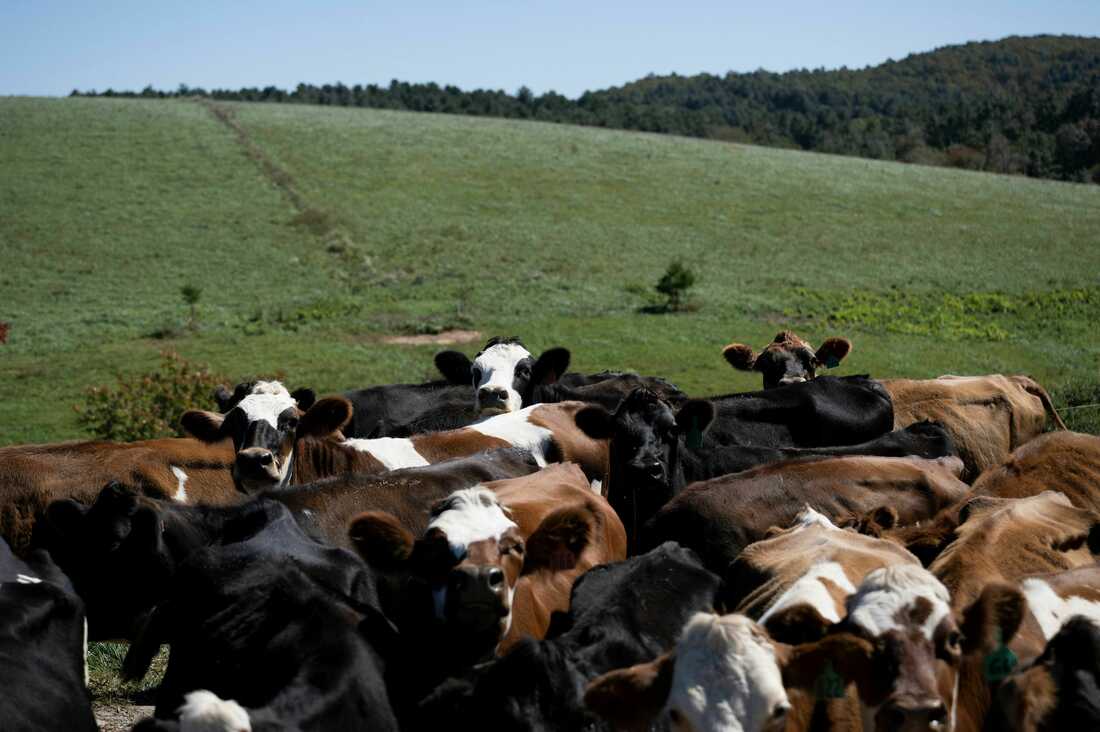Health
What consumers should know about the milk testing positive for bird flu
Cows are seen on a dairy farm in Virginia on October 5, 2022.
Brendan Smialowski/AFP via Getty Images
hide caption
toggle caption
Brendan Smialowski/AFP via Getty Images
Cows are seen on a dairy farm in Virginia on October 5, 2022.
Brendan Smialowski/AFP via Getty Images
Federal officials say the risk to the public remains low after the Food and Drug Administration announced Wednesday that tests of commercially available milk detected traces of bird flu.
The announcement comes amid a national outbreak of highly pathogenic avian influenza (HPAI) among dairy cows that was first confirmed late last month. The disease, which is very contagious and often fatal in avian populations, has spread to herds in at least eight states. At least one person who was in contact with presumably sick animals also caught the virus.
But government officials and scientific experts say so far there is no evidence of infectious virus in pasteurized milk.
National Institute of Allergy and Infectious Diseases director Jeanne Marrazzo said Wednesday in a call with reporters that tests conducted on retail milk showed that there was genetic material from the virus.
Efforts to grow the virus from those samples indicated that the virus was not infectious or “alive,” Marrazzo said, adding that testing was only conducted on a small set of samples.
“To date, we have seen nothing that would change our assessment that the commercial milk supply is safe,” the FDA said in a statement.
If pasteurization inactivates the virus, why is it showing up in milk?
Pasteurization has been used in the U.S. for decades to kill harmful bacteria and viruses in milk, but pasteurization may not erase all traces of a virus.
Some genetic material may be left behind after the pasteurization process, such
“A car gets in an accident. It’s no longer functioning. You can’t drive it. It doesn’t do anything that a car does. But you sift through the rubble and you could still find the instruction manual that tells it how to work,” he said.
Alcaine said that’s likely what’s happening with bird flu in milk: Tests show the virus used to be there, but it’s no longer able to cause an infection.
The FDA said there haven’t been any studies specifically on whether pasteurization inactivates bird flu in cow’s milk because bovine infections are so new. However, it added that previous studies have shown that pasteurization is “very likely to effectively inactivate heat-sensitive viruses, like H5N1” and that pasteurization has inactivated bird flu in eggs, a process that occurs at a lower temperature than for milk.
The FDA said it detected bird flu in milk using quantitative polymerase chain reaction (qPCR) tests, which “do not represent actual virus that may be a risk to consumers.”
Further evaluation of milk samples will be done using egg inoculation tests, the FDA said, which it called the “gold-standard for determining viable virus.” The agency said it would release the results from multiple studies within days or weeks.
Is it still safe to drink milk?
“There are no safety concerns,” Alcaine said of milk with traces of bird flu. “I’m still buying my milk from my local grocery store.”
Federal officials emphasize that any milk from infected cows is supposed to be discarded or destroyed and not enter the human food supply.
On top of that, any milk sold via interstate commerce in the U.S. is required to be pasteurized. The FDA has encouraged consumers not to drink raw, unpasteurized milk.
But Alcaine said influenza is generally not transmitted through food, and the more pressing concern is protecting people like farm workers, who could come into close physical contact with infected animals.
In an attempt to further contain the outbreak, the USDA’s Animal and Plant Health Inspection Service announced an order Wednesday that requires dairy cows to test negative for bird flu before they can be moved across state lines, among other measures.
